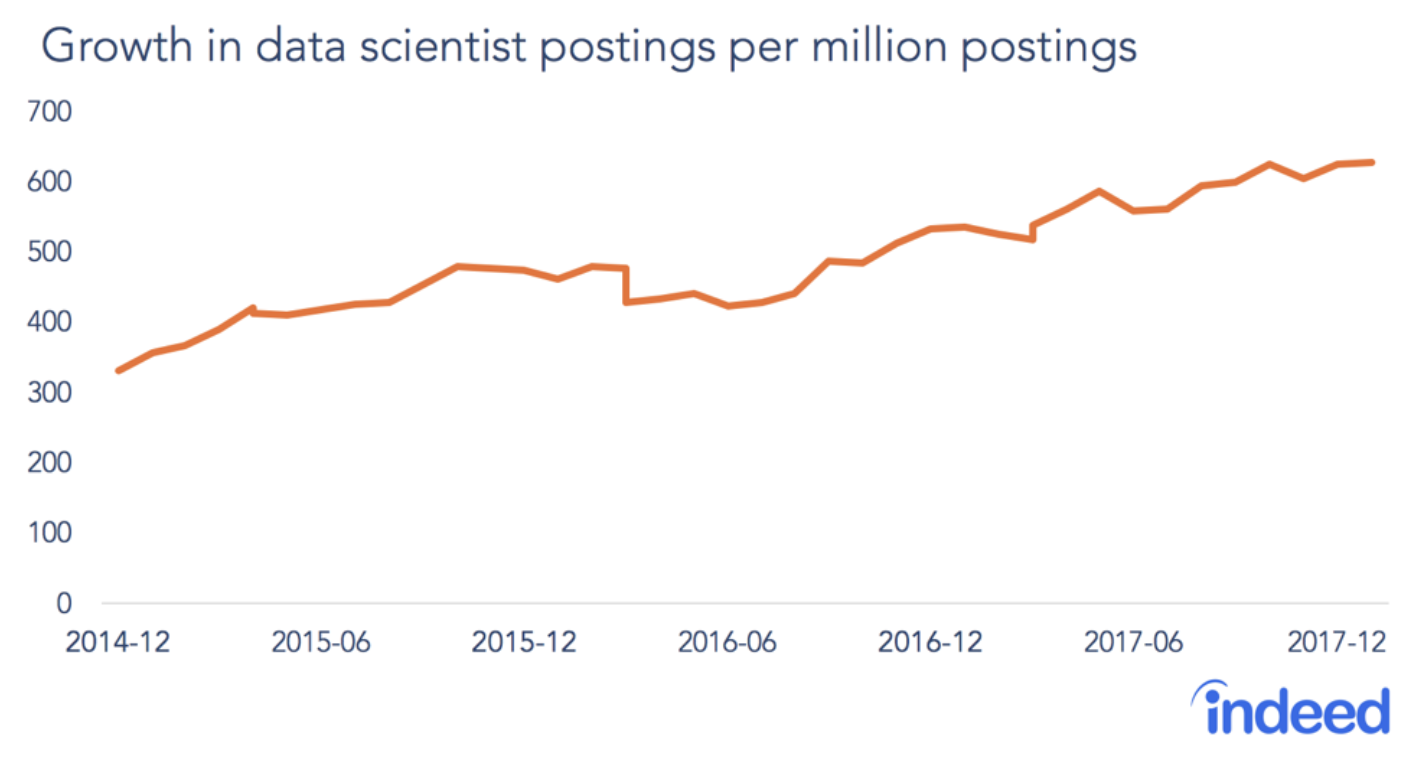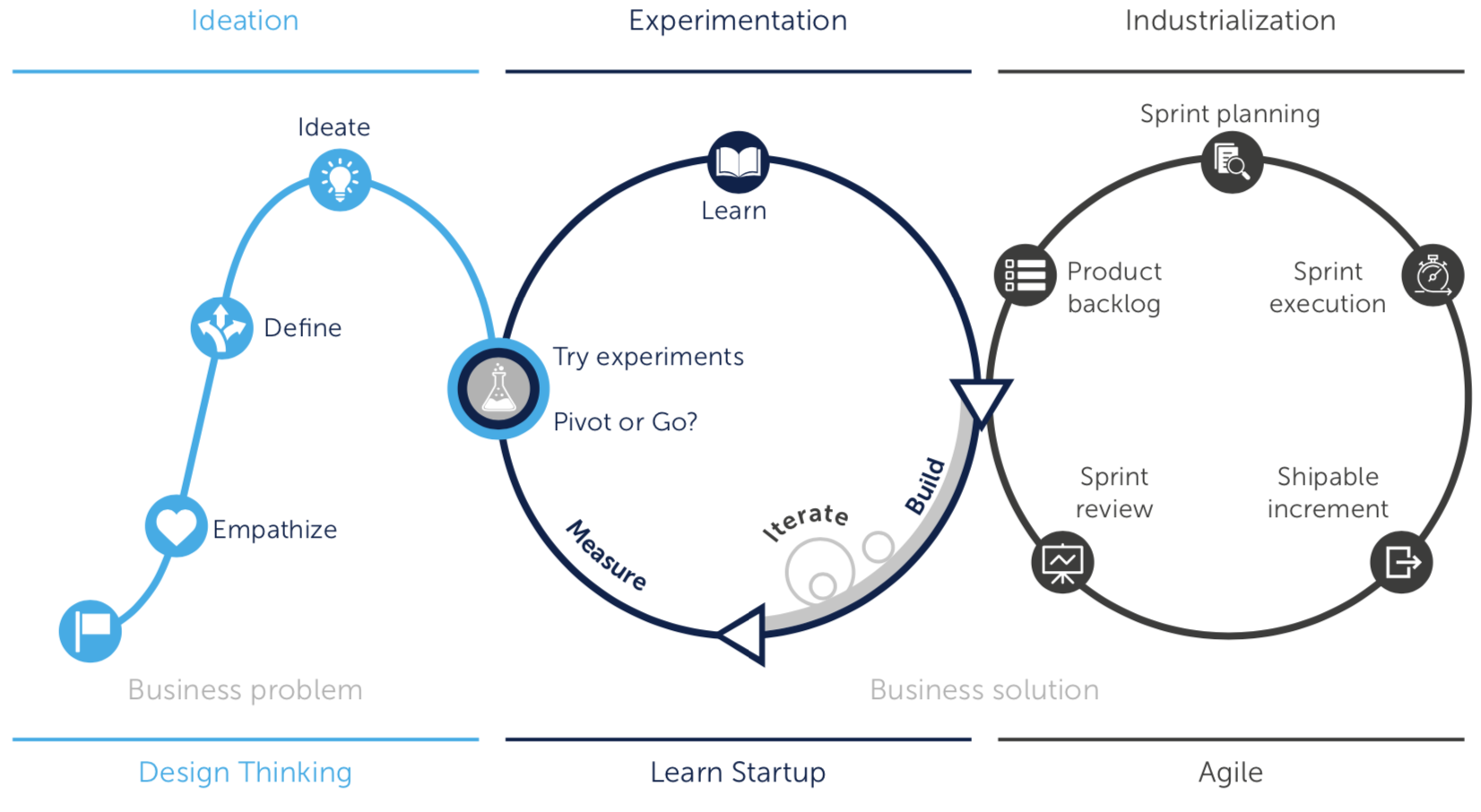In recent years, numerous organizations have invested a great deal of time and money in developing their data and AI capabilities. Sold on the promises of accelerating top-line revenue growth or increasing the bottom-line, most business were off to a flying start. Now, a couple of years in, some organizations find themselves disillusioned. Stuck at running one-off analyses and proof-of-concepts that don’t add any value, they are yet to see any return on their investments.

Indeed job postings for Data Scientists have doubled from 2016 to 2018, but did these bold Data Science plans materialize? Source.
Luckily, this not true for all organizations. At GoDataDriven, we have helped several organizations to succeed in building strong AI practices, delivering substantial value to both their business and their customers. This blog series is based on some of the lessons learned and describes how to overcome the most common difficulties when building AI solutions. The Analytics Translator plays a key role in the journey to success with data and AI. We will describe what this role is and why AI organizations cannot do without.
Moving Past One-off Exercises Towards Value
For many organizations, the AI journey begins with one-off analyses and proof-of-concepts. These one-off exercises provide a cheap and quick way to get started. A flashy proof-of-concept can inspire and “wow” the business. Moreover, it allows testing the waters to find out what is possible with in-house data. By showing what AI is capable of, most organizations build their initial business support and sometimes even free-up funding.
While these one-offs are a great point to start, one has to realize that they are only a means to an end, not the end itself. The road to value is long and winding; ideas have to be validated, value has to measured, proof-of-concepts have to be transformed into production-worthy applications, and finally, the business has to adopt the solution. You are only able to see a positive return on investment if you make it all the way to the end. Luckily, there is a system that can help you get you there: the AI solution framework.
The AI Solution Framework
In order to build a valuable AI solution, you need to get two things right. One, make sure that the business problem you are addressing is the right one. Two, make sure that the solution satisfies the needs of your end user and is built correctly. These important keys to success are firmly embedded in the AI solution framework.

The AI solution framework consists of three phases. Each phase aligns with a popular methodology. Ideation is based on the principles on Design Thinking that explores business problems and translates them into use cases. A use case is rapidly built into a prototype during Experimentation to discover if its business model is viable, following the philosophy of the Lean Startup. The Industrialization phase takes a validated prototype and builds it into a solution. The Agile methodology focuses on iteratively building products together with the end user to make sure the solution is built right. Successfully building a solution requires going through these three phases and knowledge of each of these methodologies.
When it comes to building valuable AI solutions, adopting this framework sets your organizations up for success. There is a catch however: it only works when the business is involved from the start.
Business Involvement is Key
Even if data teams can build AI solutions achieving near perfect prediction scores, they will never succeed in creating value if the business is not properly involved. Often, teams start experiments without involving key stakeholders to define the use case, or they build a solution without the end user in mind. As a result, the business either does not embrace the delivered solution or cannot fit it into their workflow.
The business needs to be in the driver seat to build valuable AI solutions. Here, however, organizations face a conundrum; how can you let the business drive the build of highly technical solutions without the technical expertise on a topic that is so different from traditional IT? This is where the Analytics Translator comes into play.
In the rest of the blog series, we will show how the Analytics Translator can help you to develop AI solutions that will actually create value for your organization.
Questions to Ask Yourself
- What are the biggest challenges in developing AI solutions within your organization?
- How is your workflow aligned with the phases in the AI solution framework?
- Who in your organization is responsible for all or any of these phases?
This blog is part of a series. You can find the next blogs here and here.
This blog has also been published in the free magazine "The Analytics Translator" – Download here!




